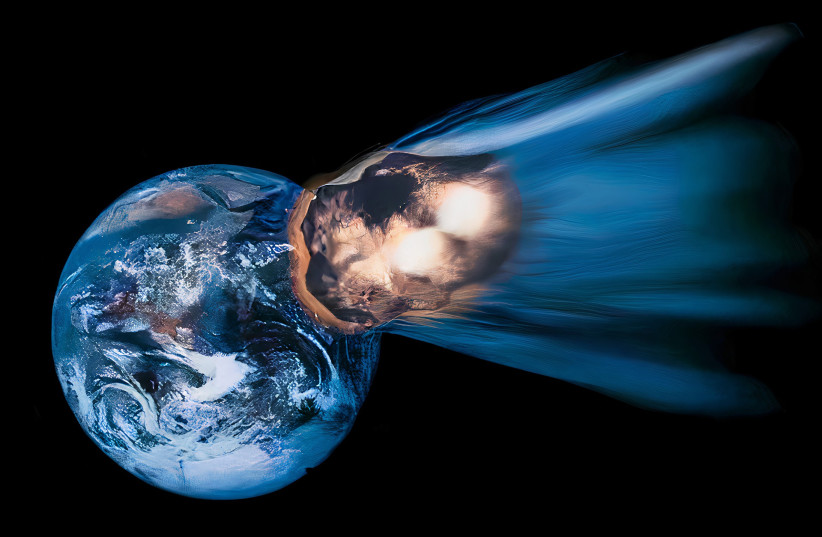Meeting Heavenly Threats
"People [shouldn't lose sleep] over the chances of being hit by a devastating asteroid.""In the event that we find something that is going to hit the Earth we would like to do something about it.""It's not a matter of finding them and sitting there and letting it hit."Professor Richard Wainscoat, University of Hawaii
 |
An asteroid is seen heading towards the planet in this artistic rendition.
(photo credit: PIXABAY)
|
A new study published in the journal Icarus claims that fifty percent of impactors (celestial bodies) that approach Earth from the East undergo periods of slow motion, making their presence difficult to detect. Asteroids the size of the 2019 body, named 2019 OK that came alarmingly near Earth as a "near miss" as it hurtled past the planet at a distance of 70,000 km. The asteroid, about 91 metres across, was identified a mere 24 hours previous to its alarming bypass.
And it was that incident that spurred the NASA-funded scientists to embark on their study where they identified a danger zone where potentially devastating asteroids have the potential to "sneak up" undetected toward Earth. Celestial objects in their East-direction approach in the dark night sky can give the appearance of being stationary, resulting from a quirk of Earth's daily rotation in its journey circling the sun.
The network of computerized telescopes whose purpose is to watch out for such threats are bypassed by this newly-identified approach with its consequential outcomes. NASA was tasked by the US. Congress to identify 90 percent of asteroids of a size 140 metres across or larger, determined to be a size which could wreak a devastating impact on a region the size of a large city or small state, once it hit terra firma.
With the recognition of the potential, however seemingly dim, that such an impact could occur with its devastating outcome, the agency is developing preventive measures as well, to avoid such grimly possible scenarios. NASA launched an experimental mission last year meant to smash a heavy spacecraft into the moonlet of a comet, a measure to determine whether it would knock the moonlet off course.
"A 330-foot- (100 m) wide asteroid designated 2019 OK passed just 43,500 miles (70,000 km) from Earth on July 25, 2019. It was discovered by the Brazilian SONEAR survey just days ago, and its presence was announced mere hours before it zoomed past our planet. 2019 OK is not a threat to Earth right now. However, this and other near-Earth asteroids do pose a genuine risk. The Tunguska explosion in 1908 and the Chelyabinsk meteor in 2013 were equivalent to large nuclear explosions, and under the wrong circumstances a meteor impact could devastate a city." Jul 31, 2019 by The Conversation, SciNews
Algorithms governing observation telescopes alert to asteroids are programmed to flag moving objects in order to avoid incorrectly identifying phenomena such as supernovas and flare stars, taking account of the fact that objects in their approach to Earth appear to drift west in the sky, reflecting Earth's eastward axis spin.When asteroids approach Earth from an area of the Eastern sky the planet's spin and curved orbit around the sun can have the effect of making the objects appear stationary.
"Astronomers are well aware of the risks posed by asteroids hitting Earth. Meteor craters can be found around the globe, and some relatively fresh examples include Wolfe Creek in northern Australia and the imaginatively named Meteor Crater in Arizona.""A huge asteroid impact 65 million years ago near Chicxulub in modern-day Mexico initiated the fall of the dinosaurs."SciNews
 |
| An asteroid is seen heading towards the planet in this artistic rendition. (credit: PIXABAY) |
Labels: Asteroid Collisions, Astronomy, Earth, NASA, Preventive Action
0 Comments:
Post a Comment
<< Home